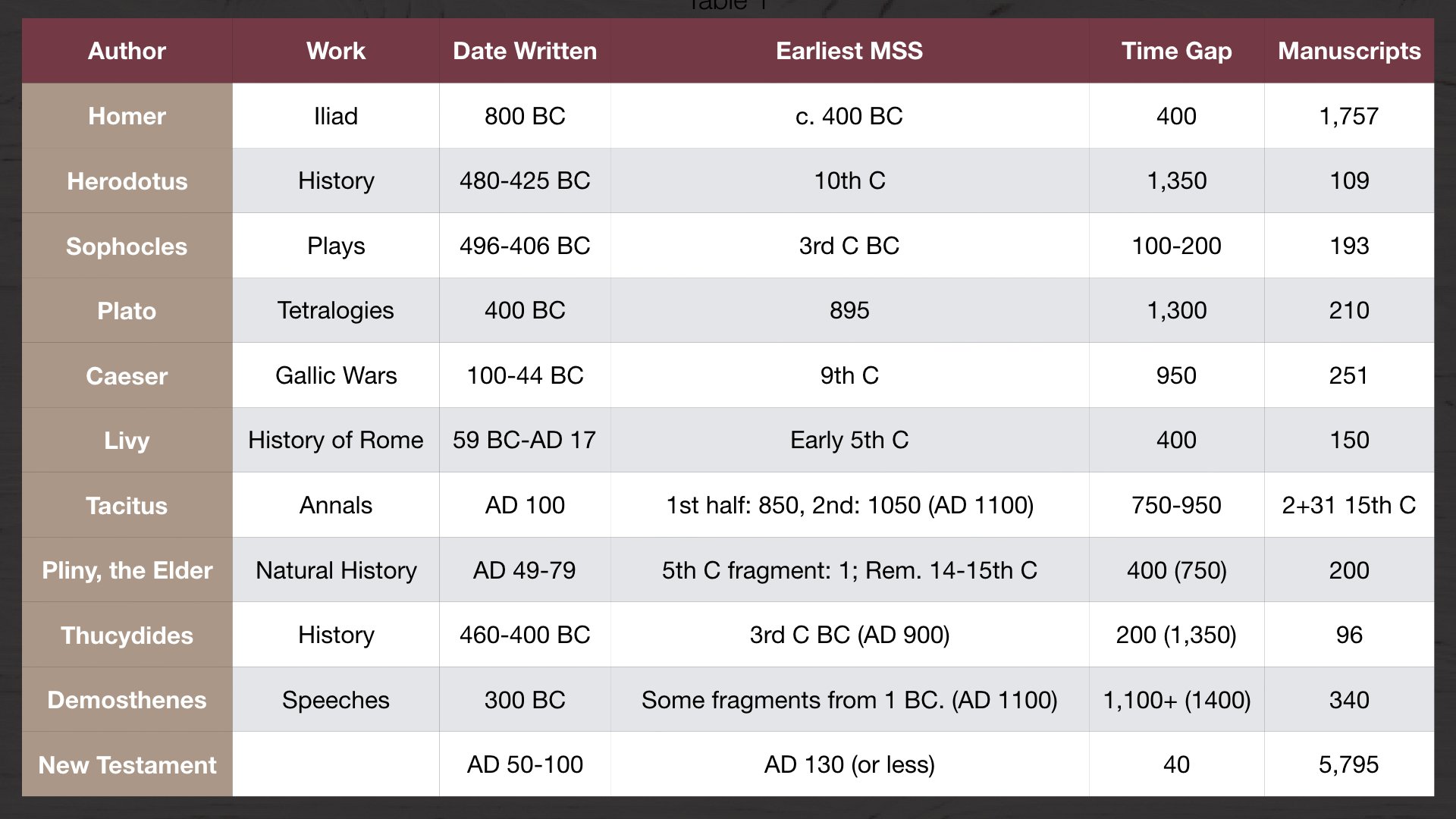As we continue our study of John’s gospel, we arrive at this complicated statement in the Bible, “The earliest manuscripts do not include 7:53–8:11.”
The Bible is actually a library of sixty-six books written by roughly forty authors over the course of 1,500 years on three continents (Asia, Africa, Europe). Thirty-nine books comprise the Old Testament before Jesus walked the earth, and twenty-seven books comprise the New Testament after Jesus walked the earth. The current chapter divisions were added in the 1200’s, and the current verse divisions were added in the 1500’s.
Unlike other books, the Bible claims to be perfect revelation from God:
- 2 Timothy 3:16 All Scripture is breathed out by God…
- 2 Peter 1:20-21 …no prophecy of Scripture comes from someone’s own interpretation. For no prophecy was ever produced by the will of man, but men spoke from God as they were carried along by the Holy Spirit.
- There is in fact a five-step process by which we received the Bible with the first two steps being perfect and the remaining three accurate and trustworthy:
Step 1: Revelation: God speaks
Step 2: Inspiration: Holy Spirit helps author record the revelation
Step 3: Transmission: Scholars hand write copies
Step 4: Translation: Scholars bring the books into other languages
Step 5: Interpretation: Holy Spirit helps people understand God’s Word
Regarding Step 3, the question is often asked “Why should we trust copies of the Bible?” The handwritten copying of the Bible was done in ancient times by devout scholars who were exceedingly careful to accurately repeat what God had said. Various scholars who have studied the issue say that over 99% of manuscripts are in agreement with a few variances in things such as spelling and punctuation and no major doctrine in question. Also, Jesus Himself taught from copies and translations of the Old Testament with full confidence in their trustworthiness. Furthermore, compared to other ancient literature the New Testament is in a class by itself as the following chart shows:

See Article: http://www.equip.org/article/the-bibliographical-test-updated/
Regarding the story of the woman caught in adultery, four things can be said. One, no major doctrine is in question. Two, nothing in the story contradicts the rest of Scripture. Three, the account bears all the marks of being historically accurate. Four, the early church Fathers had two possible explanations. Augustine thought that the account was in earliest manuscripts removed for fear of not restraining adultery. Jerome seemed to believe that it was an actual, accurately related event that was simply added later.
Critics of the Bible will use this and other potential dilemmas to try to attack the Bible. But, the Bible is the most honest and truthful book ever written and the scholars who compiled it even include a disclaimer, admitting the rare occasion where there is a question, which should only increase our trust in the Book that God wrote. He has supernaturally preserved it so that the Holy Spirit can continue to work through it.
